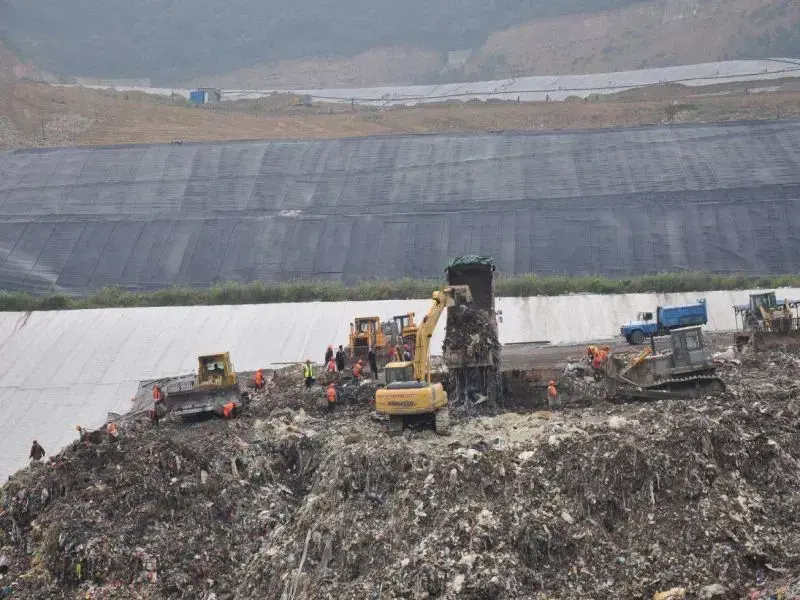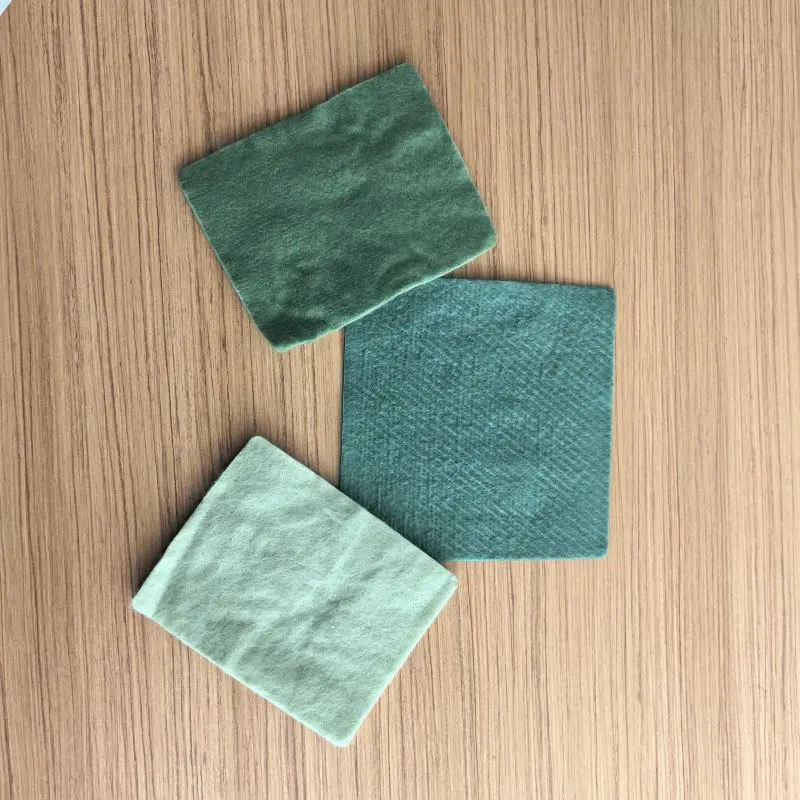Introduction to Non-Woven Geotextiles
627525.webp)
Non-woven geotextiles are synthetic fabrics manufactured from polymers like polypropylene or polyester. These materials are mechanically or thermally bonded, creating a porous and flexible textile that possesses excellent filtration, drainage, and separation properties. In landfill applications, these geotextiles are engineered to withstand the harsh conditions and diverse waste compositions.
Specifications and Characteristics
Material Composition: Non-woven geotextiles for landfills are typically made from high-quality polypropylene or polyester fibers, providing high tensile strength and chemical resistance against various waste materials.
Weight and Thickness: The specifications often range from 4 oz/sq. yard (136 g/m²) to 16 oz/sq. yard (544 g/m²), with varying thicknesses tailored for specific landfill requirements.
Table 1 Product Specifications and Deviations
Projects | finger sign | ||||||
Specification/ (g/ m2). | 200 | 300 | 400 | 500 | 600 | 800 | 1 000 |
Mass deviation per unit area of short wire/% | Sat 6 | ||||||
Mass deviation per unit area of filament/% | Soil 5 | ||||||
Thickness / mm | 2.0 | 2.4 | 3. 1 | 3.8 | 4. 1 | 5. 0 | 6.5 |
Thickness deviation / mm | Soil 0. 2 | Sat 0. 2 | Sat o. 3 | Taxi 0. 3 | Taxi 0. 4 | Taxi 0. 5 | Taxi 0. 6 |
Width/m | 4.0 | ||||||
Width deviation/% | Taxi O. 5 | ||||||
Permeability and Filtration: They possess controlled permeability rates to allow the passage of water while retaining soil particles, preventing clogging and ensuring effective drainage within landfill structures.
Table 2 The main technical parameters of non-woven geotextiles for landfill seepage prevention and drainage system
I
Projects |
Breaking strength kN/m |
Elongation at break % |
Breaking strength kN |
Equivalent pore size
O,o/mm |
Vertical permeability coefficient
crn/s |
Tear strength kN |
Retention rate of fracture strength in artificial climate aging % |
Artificial climate aging, elongation at break, retention rate % | |
specification
g/m2 | 200 | >11. 0 |
40~80 | >2.1 |
0. 05~0. 20 |
K x c10- 1~ 10 一3)
K=l. 0~9. 9 | >0.28 |
70 |
>70 |
300 | >16. 5 | >3.2 | >0.42 | ||||||
400 | >22.0 | >4.3 | >0.56 | ||||||
500 |
>27.5 |
>5.8 |
>10 | ||||||
600 | >33.0 | >7.0 | >0.82 | ||||||
800 | >44.0 | >8. 7 | >l.10 | ||||||
1000 | >55.0 | >9.4 | >l. 25 | ||||||
Tensile Strength and Elongation: These geotextiles exhibit high tensile strength and elongation properties to endure stresses during installation and resist damage caused by waste settlement or mechanical loads.
Table 3 The landfill covers the main technical parameters of nonwoven geotextiles
Artificial climate | |||||||||
Projects |
Breaking strength kN/m | Elongation at break % | Breaking strength kN |
Equivalent pore size O,o/mm |
Vertical permeability coefficient cm/s | Tear strength kN | Artificial climate Retention of aging breaking strength % |
Elongation at Aging Retention % | |
specification g/m2 | 200 | >,6. 5. |
40~80 | >0.9 |
0. 05~0. 20 |
K X (l O一1~ 1 0一3)
K=l. 0~9. 9 | >o. 16 |
70 |
70 |
300 | >9.5 | >1. 5 | >0.24 | ||||||
400 | >12. 5 | >2. 1 | >0.33 | ||||||
500 | >16.0 | >2. 7 | >0.42 | ||||||
600 | >19.0 | >3.2 | >o.46 | ||||||
800 | >25.0 | >4.0 | >0.60 | ||||||
The appearance specifications for non-woven geotextiles used in landfills play a significant role in their functionality and performance within these environments. These specifications ensure the material meets specific visual and physical characteristics crucial for its successful application. Here are the appearance specifications commonly required:
Table 4 Non-woven geotextile appearance quality specifications
serial number | Item (Defect) | Minor defects | Chong-hsien |
1 | The cloth surface is uneven and creased | slight | severe |
2 | sundry | soft, rough<3 mm | Hard;Soft, > 3 mm thick |
3 | Bad edges | At 300 cm, one for every 50 cm | <300 cm |
4 | dilapidation | or. 5 cm | >O. 5 cm; broken hole |
Note: The damage is calculated based on the maximum length of the defect. | |||
UV Resistance and Durability: UV stabilization features enable them to withstand prolonged exposure to sunlight without degradation, ensuring long-term durability in landfill applications.
Chemical Resistance: Non-woven geotextiles are chemically inert and resistant to biological degradation, safeguarding against the adverse effects of leachate or waste chemicals.
Installation Flexibility: They are available in various roll sizes and widths, allowing flexibility in installation to cover large areas and complex contours within landfill structures.
Landfill Applications and Benefits
Erosion Control and Soil Separation: Placed as a protective barrier, these geotextiles prevent soil erosion and facilitate separation between different layers of soil or waste materials.
Leachate Management: They serve as a critical component in leachate collection systems, enabling the efficient flow of leachate to collection points while preventing soil contamination.
Drainage Enhancement: Non-woven geotextiles aid in enhancing drainage systems within landfills, allowing water to flow freely while preventing soil clogging.
Protection and Reinforcement: Used as a protective layer, they reinforce geomembranes and prevent punctures or damage caused by waste materials.
Long-Term Stability: Their durability and resistance to environmental factors ensure the long-term stability and structural integrity of landfill systems.

Non-woven geotextiles with specific specifications tailored for landfill applications are indispensable elements in the modern waste management process. Their multifaceted roles in erosion control, drainage, soil separation, and long-term stability make them an integral part of landfill engineering, significantly contributing to environmental protection and sustainable waste containment.

897.webp)
942.webp)
237.webp)